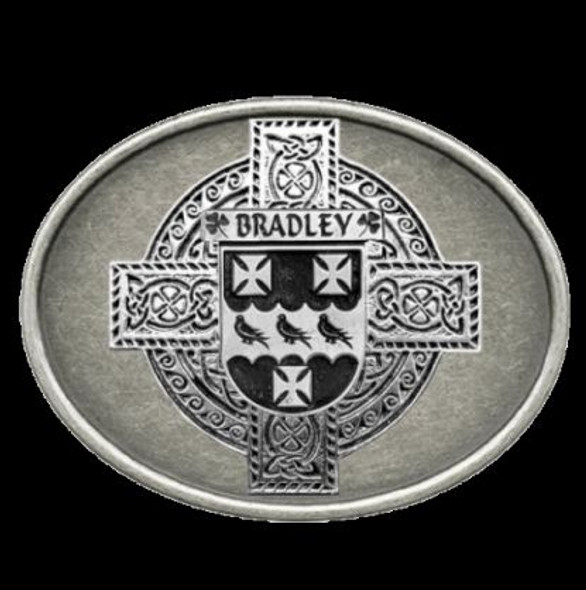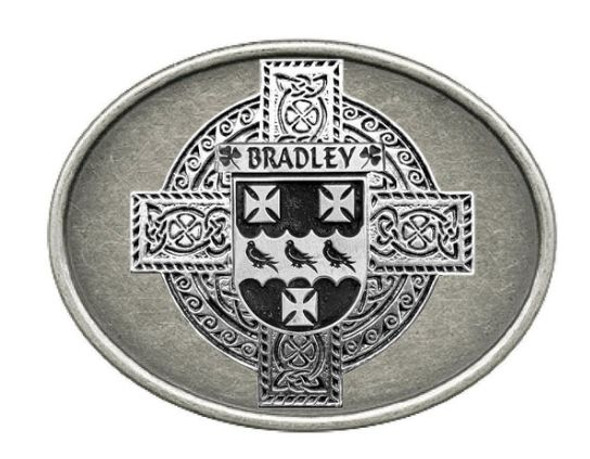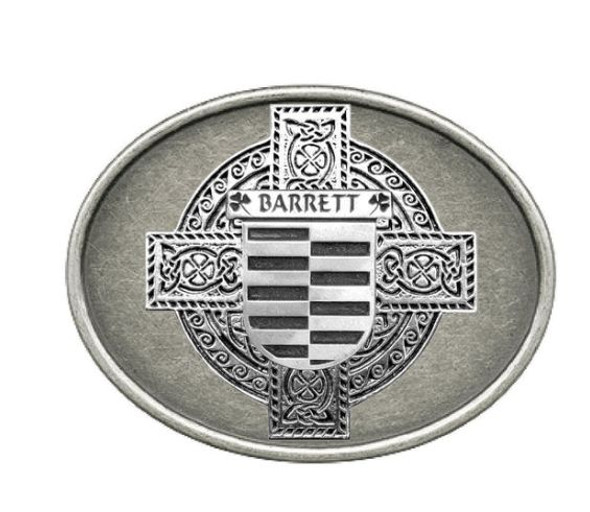Description
Brennan Irish Coat of Arms Oval Antiqued Mens Sterling Silver Belt Buckle
Sterling Silver Irish Coat Of Arms Belt Buckle
Antiques Brass Regular Mens Belt Buckle
measures 80.00mm (3.14 inches) x 61.00mm (2.40 inches)
Irish Coat Of Arms Badge Design
This Irish Belt Buckle is expertly crafted with beautiful Sterling Silver Crest set surrounded by a base metal that is plated with an antique brass backround. This is a regular sized antiqued brass buckle mounted with your Irish Coat of Arms set in the middle of a Celtic Cross design. This buckle is suitable for everyday wear.
This whole belt buckle measures approximately 80.00mm (3.14 inches) x 61.00mm (2.40 inches). The Irish Family Crest set in the center measures approximately 51.00mm x 57.00mm (2.00 x 2.25 inches) in diameter.
Suitable for a mens belt 1.50 inches (39.00mm) wide or smaller. Not suitable for military regulation or kilt belts. There are many products that this Irish Coat Of Arms Badge can be included with, please see my other store listings. A large number of Irish Coat Of Arm and Clan Badges products are available in my store in different materials please enquire.
This design is also available with other finishes and designs, please see my other store listings. Irish Coat Of Arms Belt Buckles are also available with Stylish Peter badges, please enquire and see my other listings for details.
PLEASE ENQUIRE
Perfect for any occasion. This is a gift that will be proudly worn by any member of your family.
Questions welcome at anytime, my door is always open for assistance.
A BRIEF HISTORY OF THE CELTS
For 800 years the Celts were the most powerful people in central and northern Europe. There were many tribes of Celts who spoke related languages,shared similar customs and beliefs, and created works of art in closely connected styles. Invaders, such as the Romans, eventually drove them from their lands, although they never managed to conquer all the Celts, with parts of Scotland, Wales, Cornwall and Ireland continuing under Celtic rule until about AD1100. It is in these lands that Celtic art and designs survived, carved into stone crosses and discovered on jewellery and ornaments. Religious scholars and monks adopted the traditions of Celtic art, creating illuminated texts such as the Book of Kells. The Celtic Cross evolved, with the circle that surrounds the cross symbolising the "great wheel of life" and knotwork denoting the binding of the soul to the world.















